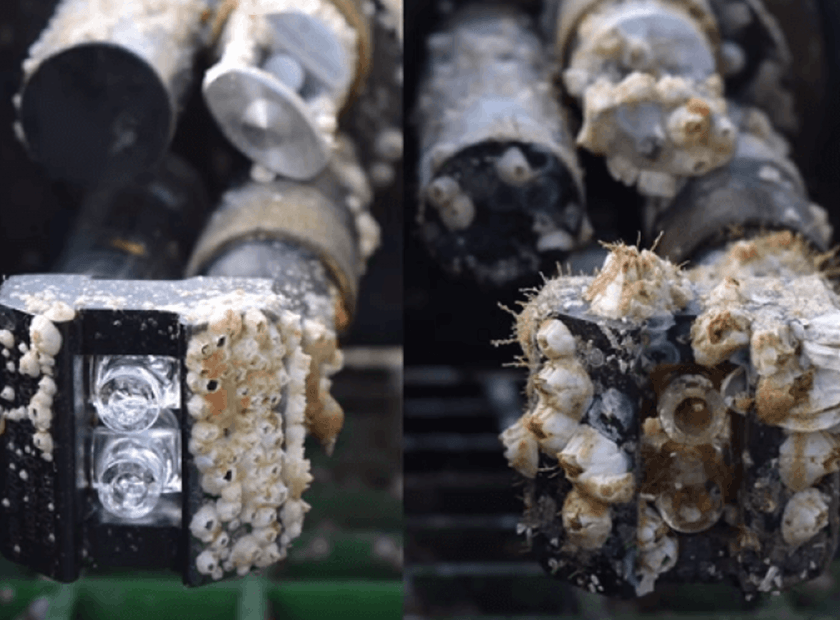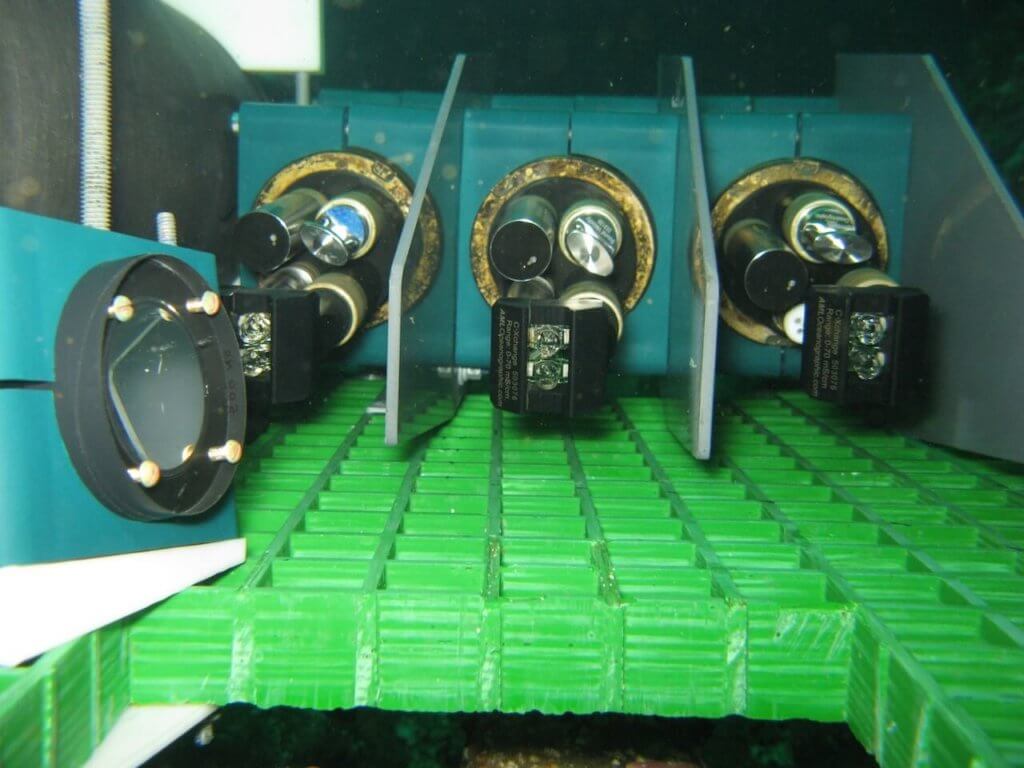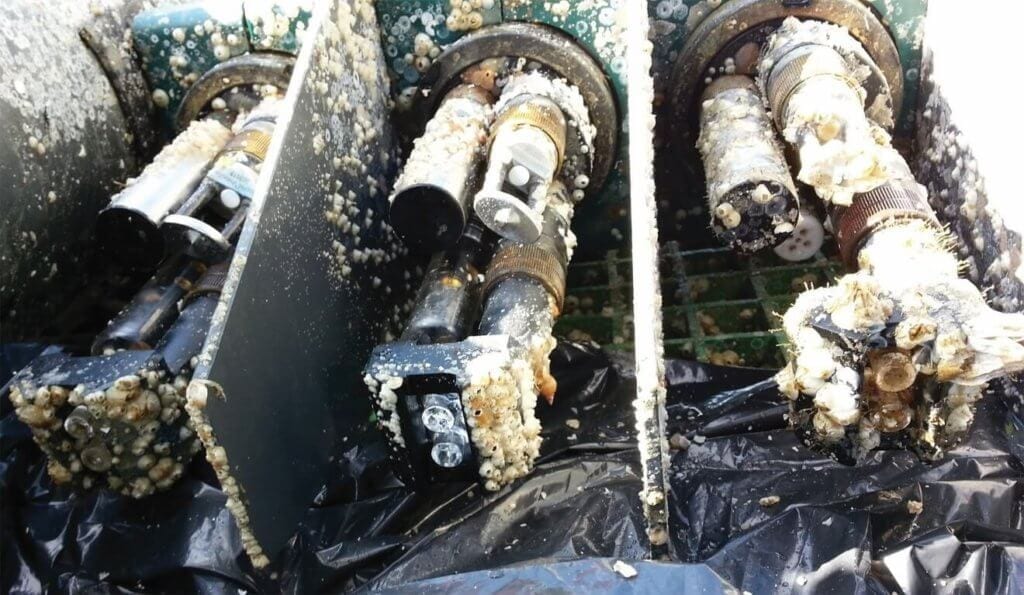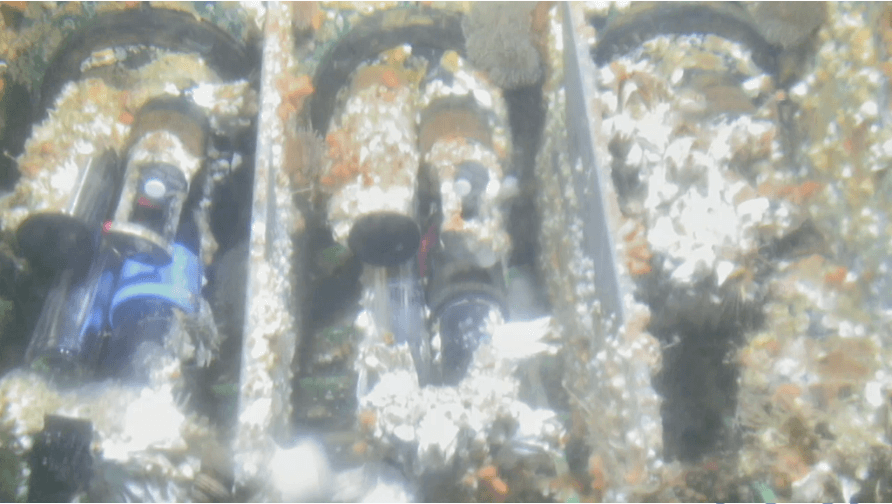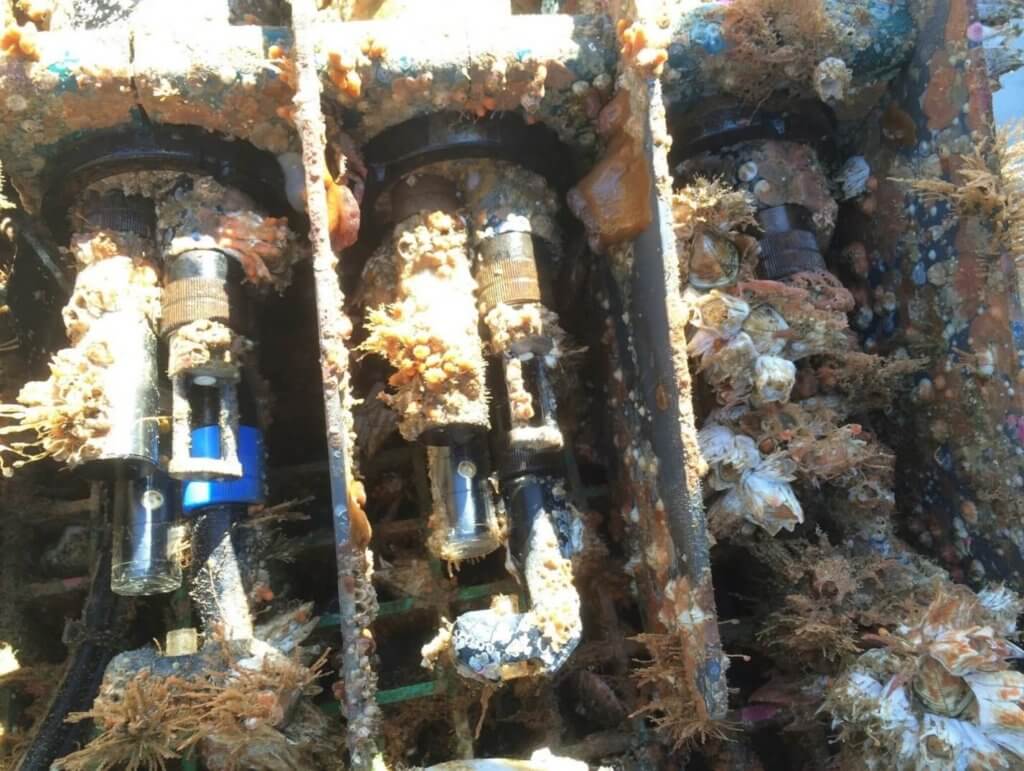Foul Free at Folger Pinnacle
UV•Xchange™ Protects Sondes at Ocean Networks Canada's Cabled Observatory for Over Two Years
By: Jehan Zouak, Marketing Coordinator - AML Oceanographic

"With the incredible results of the AML Oceanographic CTD and UV anti-biofouling system in our technology demonstration program we are very pleased to be deploying these systems across coastal BC as part of the Smart Oceans™ program. High biofouling areas in the coastal zone create a huge challenge in ongoing operations and maintenance costs for any observatory, especially in remote locations. After 15 months and still going, at our worst bio-fouling site, the sensors remain clean and operating fine. We are all absolutely amazed. AML Oceanographic has really made a revolutionary advance in anti-biofouling technology with this new product."
Scott McLean
Director of Ocean Network Canada's Innovation Centre
Background
Biofouling, the unwanted growth of marine organisms, is the principle factor limiting the duration of deployments of submerged equipment. Underwater sensors, cameras, connectors, lights, windows, and other surfaces or structures are susceptible to marine growth that renders them ineffective. In some environments, biofouling is so intense that cleaning or other mitigation strategies are required on a weekly basis.
Manual cleaning, servicing, or replacement of underwater equipment on a regular basis is costly and in some locations impossible. For this reason, the ocean sensing industry has spent considerable effort over many years to develop in-situ biofouling control technologies that allow the sensors or devices to remain functional in the field for extended durations uninhibited by marine growth. The biofouling control technologies resulting from these efforts can be broadly categorized into three groups: 1) volumetric chemical dosing techniques, 2) surface coatings and treatments, and 3) mechanical methods. Their shortcomings led AML to develop a UV-based technology that is non-toxic, non-contact, and suitable for the complex geometries often found on subsea equipment.
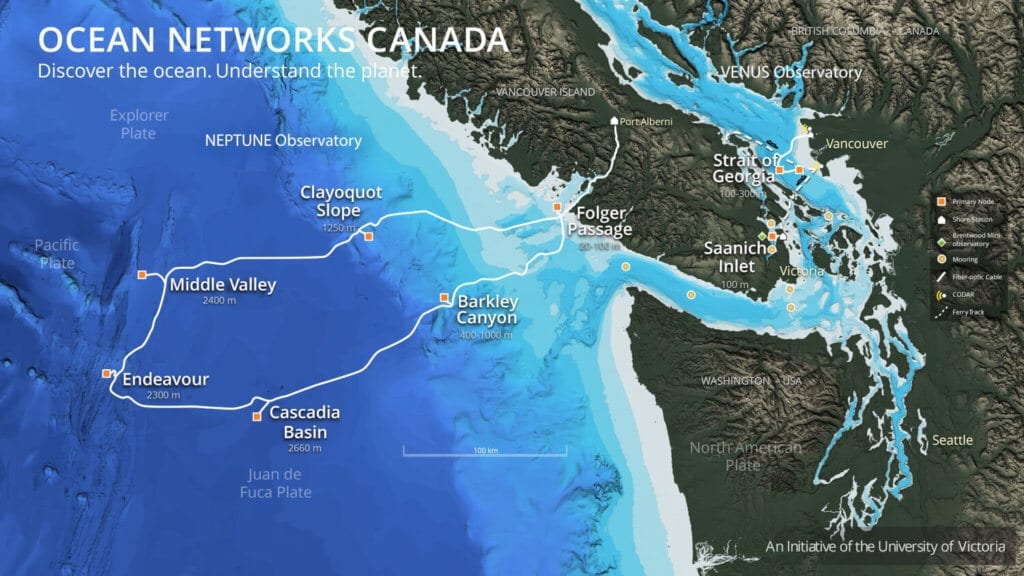
Map of the Folger Pinnacle. Located off the coast of Vancouver Island, the shallow depth and nutrient-rich waters make the Folger Pinnacle an ideal biofouling test bed. Image courtesy of ONC.
Visible Results of UV Biofouling Control
As expected, growth on the platform was rapid. Sensor readings from the control sonde demonstrated clear errors due to fouling within a few weeks. Within a few months, the instrument was enveloped in marine growth. The sensors of the UV-protected instruments, in contrast, remained in agreement within their published accuracies. Still images from daily video records were collected and stitched into a time lapse video showing 480 days of progress.
Biofouling Control Results: Two Years of Time Series Data
In addition to the visual record of the fouling, sensor readings were monitored and compared over time to assess UV’s effectiveness at eliminating biofouling-induced measurement error. Data from the AML CTD test rig were collected and compared against a reference CTD using a TBT-based biofouling control technique. The graph below shows the conductivity data trends, and a few notable events are highlighted.
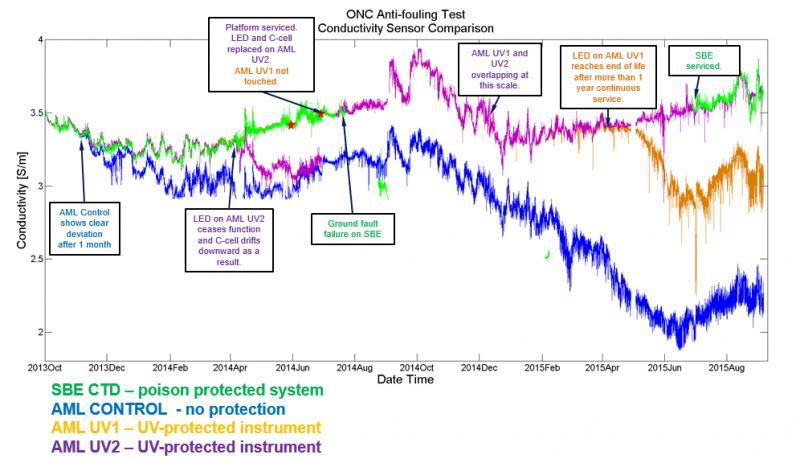
Plot of readings from conductivity sensors of the three AML instruments in addition to readings from a reference CTD on the platform. UV1 and UV2 are shown in orange and purple, respectively. The control (unprotected) conductivity sensor is shown in blue. The reference sensor is shown in green. Image courtesy of Ocean Networks Canada.
- Start of deployment: All sensors working and in agreement with each other within the total error budget
- Event 1: AML Control (lacking any biofouling control) drifts out of specification compared with UV-protected test sensors and TBT-protected reference sensor
- Event 2: LED wiring issue in UV2 results in loss of biofouling protection for conductivity sensor, causing UV2 to drift out of specification compared with UV1 and the TBT protected reference sensor
- Event 3: Platform service (see Figure 5) including replacement of UV2 LED module and fresh Conductivity Xchange™ No other cleaning, calibration, or maintenance.
- Event 4: Ground fault failure of TBT-protected CTD, resulting in long gap in reference data
- Event 5: UV1 and UV2 sensors (AML Conductivity Xchange™ sensors protected by UV•Xchange) are overlapping each other for the entire period where the TBT protected CTD data is missing, up to the next event.
- Event 6: UV1 conductivity drifts out of specification compared with UV2 as the protective LED reaches the end of its service life.
- Event 7: TBT-protected CTD is serviced and replaced. Readings are in line with UV2.
Conclusion
AML’s UV•Xchange is an attractive antifouling technology compared with other techniques currently being used as it is non-contact, non-chemical, and contains no moving parts. This technology demonstration is further confirmation of the technique’s effectiveness at preventing biofouling on sensors in long term in-situ deployments, enabling optimal performance and the expansion of monitoring timelines.
Learn how UV Biofouling Control can make a difference for you.
Whether it is preventing biofouling-induced drift to keep sensor data accurate, or keeping a camera lens clean to maintain a quality image, our UV antifouling technology optimizes the performance of the instrumentation that it is employed to protect.





